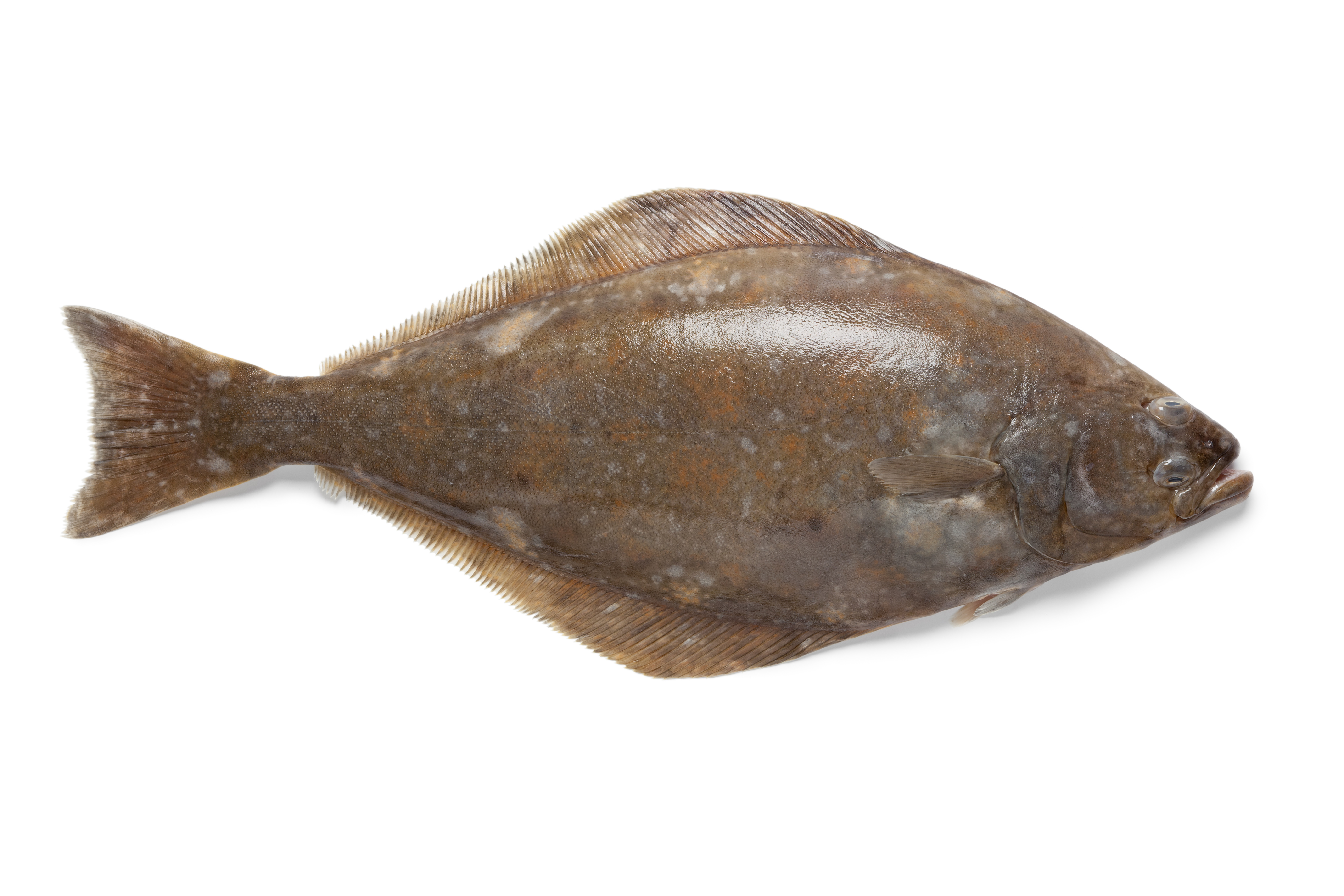Atlantic halibut
(Hippoglossus hippoglossus)

Description
The Atlantic halibut (Hippoglossus hippoglossus) is a flatfish of the family Pleuronectidae. They are demersal fish living on or near sand, gravel or clay bottoms at depths of between 50 and 2,000 m (200 and 6,600 ft). The halibut is among the largest teleost (bony) fish in the world, and is a threatened species due to a slow rate of growth and overfishing. Halibut are strong swimmers and are able to migrate long distances. Halibut size is not age-specific, but rather tends to follow a cycle related to halibut (and therefore food) abundance. The native habitat of the Atlantic halibut is the temperate and arctic waters of the northern Atlantic, from Labrador and Greenland to Iceland, the Barents Sea and as far south as the Bay of Biscay and Virginia. It is the largest flatfish in the world, reaching lengths of up to 4.7 m (15 ft) and weights of 320 kg (710 lb). Its lifespan can reach 50 years. Age can be estimated by counting the rings laid down inside the otolith a bony structure found inside the inner ear of the fish. The Atlantic halibut is a right-eyed flounder. It is flattened sideways and habitually lies on the left side of its body with both eyes migrating to the right side of its head during development. When the larvae are born, they start in the upright position like most other fish having one eye on each side of the head. Once the larvae reach one inch in length, the left eye moves over the snout to the right side of the head. At the same time, the coloring on the left side begins to fade to white while the upper side of the fish is a uniformly dark chocolate, olive or slate color, and can be almost black. The end of the caudal fin is concave. Young fish are paler with more mottled coloration. Male adults average about 10 to 15 kilograms (25-30 lb) but can range to upwards of 25 kg (60 lb), rarely reaching 45 kg (100 lb). Females can get as large as 250 kg (600 lb). Atlantic Halibut have a relatively slow growth rate and late onset of sexual maturity, with males attaining maturity at seven to eight years old, females at 10 to 11 years, and individuals averagely live around 25 to 30 years old. The oldest to have been caught was 50 years old. The Alaskan Halibut is a batch spawner where females lay anywhere from a few thousand to four million eggs (depending on the size and age of the fish, older females tend to lay only two million in one spawning period).
Taxonomic tree:







